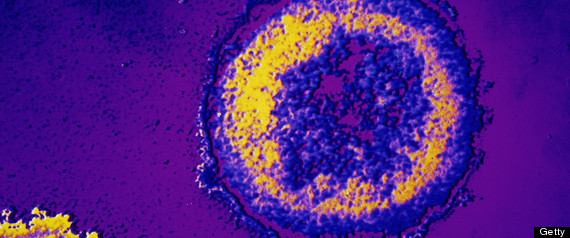
After undergoing stem cell transplants as treatment for cancer, two patients with HIV now have no trace of the virus in their systems and haven't required their HIV medication for several weeks, doctors reported today.
However, doctors cautioned that it's still too soon to say that the patients have been definitively cured, as they have only been off their treatments for 15 weeks and seven weeks, respectively.
The research, led by Dr. Timothy Henrich of Harvard Medical School and Brigham and Women’s Hospital in Boston, reported the findings today at the International AIDS Society Conference on HIV Pathogenesis, Treatment and Prevention.
"They are doing very well[1] ," Henrich said at the conference, as reported by the Associated Press. "While these results are exciting, they do not yet indicate that the men have been cured. Only time will tell."
The two patients had been HIV positive and had been taking antiretroviral medication for their condition. However, they each developed Hodgkin’s lymphoma (one patient reportedly had other blood cancers as well) and so underwent chemotherapy as well as stem cell transplants while still receiving their antiretroviral medications. The Los Angeles Times[2] reported that the men received their transplants at different times; one four-and-a-half years ago, and the other nearly three years ago. After undergoing the stem cell transplants, the virus is now undetectable.
However, the Associated Press reported that more time is needed[3] to determine if the HIV virus isn't just hiding undetected elsewhere in the body. Dr. Robert Siciliano of Johns Hopkins University explained in a statement that it may take more than a year to make sure viral rebound does not occur, and that doctors will have to continue monitoring the patients.
The first news of these two men came last year at the 2012 International AIDS Conference; back then, they had undetectable HIV levels in their blood plasma[4] , but had not yet been taken off antiretroviral medications.
The approach Henrich and his team have taken is similar to that of Timothy Brown, also known as the "Berlin Patient[5] ," who underwent stem cell transplantation as part of his treatment protocol for leukemia, before being the first person deemed "cured" of HIV[6] . However, in Brown's case, the stem cells transplanted into him were HIV-resistant stem cells, while in the cases of these two men, the stem cells did not have that genetic mutation for HIV resistance. Brown also received a more intensive chemotherapy regimen.
The Los Angeles Times reported that this method -- stem cell transplantation -- is likely to be unfeasible for most HIV-positive people[7] . NBC News pointed out last year that the reason why the approach seemed to work for these men is because they had certain gene mutations that made their immune system cells resistant to HIV infection[8] , and that in general, bone marrow transplants are expensive procedures with a 15 percent fatality rate.
This is just one of the latest HIV treatment breakthroughs that have been reported as of late. Earlier this year, a baby born with HIV was considered "functionally cured," [9] the Associated Press reported. That baby was born to a mother with HIV. The baby was given faster, stronger-than-usual treatment immediately upon birth, even before doctors were able to test that the baby actually was infected with HIV. At the time of the reporting of this news, the child was 2.5 years old and hadn't needed to take antiretroviral medication for a year.
And just after the news of this baby was reported, researchers from France reported the "functional cure" of 14 adults with HIV[10] , who were treated extremely early with combiantion antiretroviral therapy (cART). Now, their HIV levels are barely detectable, and they have been able to stop taking their treatment.
References
- ^ doing very well (hosted.ap.org)
- ^ Los Angeles Times (www.latimes.com)
- ^ more time is needed (hosted.ap.org)
- ^ undetectable HIV levels in their blood plasma (www.huffingtonpost.com)
- ^ also known as the "Berlin Patient (www.huffingtonpost.com)
- ^ first person deemed "cured" of HIV (www.huffingtonpost.com)
- ^ likely to be unfeasible for most HIV-positive people (www.latimes.com)
- ^ had certain gene mutations that made their immune system cells resistant to HIV infection (www.nbcnews.com)
- ^ baby born with HIV was considered "functionally cured," (www.huffingtonpost.com)
- ^ reported the "functional cure" of 14 adults with HIV (www.huffingtonpost.com)
- ^ Send us a tip (www.huffingtonpost.com)
- ^ Send us a photo or video (www.huffingtonpost.com)
- ^ Suggest a correction (www.huffingtonpost.com)

0 comments:
Post a Comment